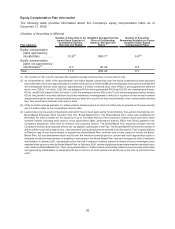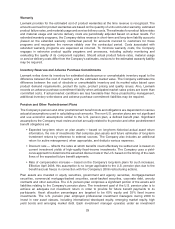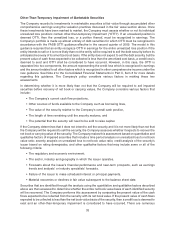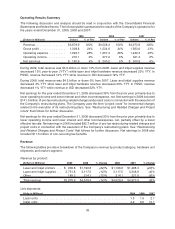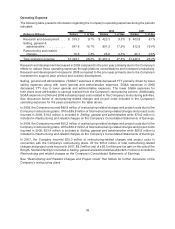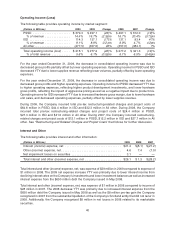Lexmark 2009 Annual Report Download - page 37
Download and view the complete annual report
Please find page 37 of the 2009 Lexmark annual report below. You can navigate through the pages in the report by either clicking on the pages listed below, or by using the keyword search tool below to find specific information within the annual report.Contingencies and Litigation
In accordance with FASB guidance on accounting for contingencies,Lexmark records a provision for a loss
contingency when management believes that it is both probable that a liability has been incurred and the
amount of loss can be reasonably estimated. The Company believes it has adequate provisions for any
such matters.
Copyright Fees
Certain countries (primarily in Europe) and/or collecting societies representing copyright owners’ interests
have taken action to impose fees on devices (such as scanners, printers and multifunction devices)
alleging the copyright owners are entitled to compensation because these devices enable reproducing
copyrighted content. Other countries are also considering imposing fees on certain devices. The amount of
fees would depend on the number of products sold and the amounts of the fee on each product, which will
vary by product and by country. The Company has accrued amounts that represent its best estimate of the
copyright fee issues currently pending. Such estimates could change as the litigation and/or local
legislative processes draw closer to final resolution.
Environmental Remediation Obligations
Lexmark accrues for losses associated with environmental remediation obligations when such losses are
probable and reasonably estimable. In the early stages of a remediation process, particular components of
the overall obligation may not be reasonably estimable. In this circumstance, the Company recognizes a
liability for the best estimate (or the minimum amount in a range if no best estimate is available) of the cost
of the remedial investigation-feasibility study, related consultant and external legal fees, and for any other
component remediation costs that can be reasonably estimated. Accruals are adjusted as further
information develops or circumstances change. Recoveries from other parties are recorded as assets
when their receipt is deemed probable.
Fair Value
The Company currently uses recurring fair value measurements in several areas including marketable
securities, pension plan assets and derivatives. The Company uses fair value in measuring certain
nonrecurring items as well, as instructed under existing authoritative accounting guidance.
Fair value accounting guidance defines fair value, establishes a framework for measuring fair value in
GAAP and expands disclosures about fair value measurements. Fair value is defined as the price that
would be received to sell an asset or paid to transfer a liability in an orderly transaction between market
participants at the measurement date. As part of the framework for measuring fair value, the guidance
establishes a hierarchy of inputs to valuation techniques used in measuring fair value that maximizes the
use of observable inputs and minimizes the use of unobservable inputs by requiring that the most
observable inputs be used when available.
The three levels of the fair value hierarchy are:
• Level 1 — Quoted prices (unadjusted) in active markets for identical, unrestricted assets or
liabilities that the Company has the ability to access at the measurement date;
• Level 2 — Inputs other than quoted prices included in Level 1 that are observable for the asset or
liability, either directly or indirectly; and
• Level 3 — Unobservable inputs used in valuations in which there is little market activity for the asset
or liability at the measurement date.
The Company utilizes observable market data, when available, to determine fair value. However, in certain
situations, there may be little or no market data available at the measurement date, thus requiring the use
of significant unobservable inputs. To the extent that a valuation is based on models, inputs or assumptions
31



